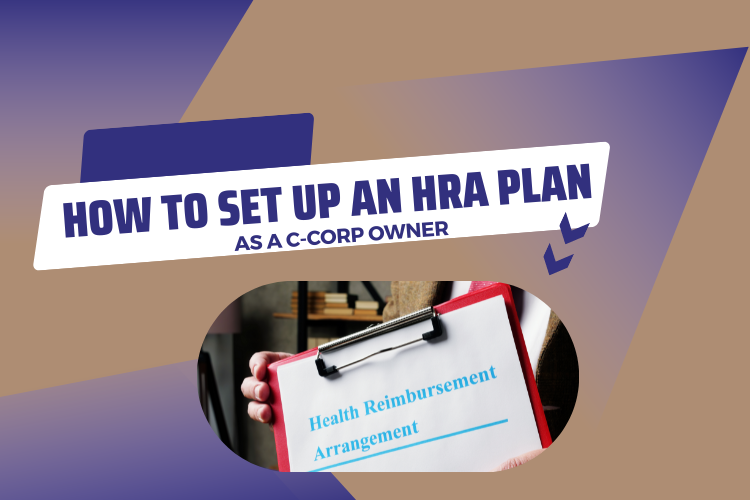
How to Set Up an HRA Plan as a C-Corp Owner
As a C Corporation owner, you have the unique advantage of participating in a Health Reimbursement Arrangement (HRA) and enjoying tax-free reimbursements for qualified medical expenses. Setting up an HRA can be a great way to manage healthcare costs for yourself and your employees.
Here’s a step-by-step guide to help you get started:
1. Plan Design
First, decide on the specifics of your HRA plan. Consider the following:
1. Annual Contribution Limit: Calculate the specific amount the company will allocate to the Health Reimbursement Arrangement (HRA) annually.
2. Eligible Expenses: Specify the medical expenses that qualify for reimbursement under the plan.
3. Coverage: Determine whether the Health Reimbursement Arrangement (HRA) will provide benefits solely to the owner or extend to all employees.
2. Plan Documents

Create formal plan documents that outline the terms and conditions of the HRA. These documents should include:
- Plan description
- Eligibility requirements
- Reimbursement procedures
3. Adopt the Plan
Ensure the C Corporation formally authorizes the HRA plan through a corporate resolution. This step is vital for ensuring the company formally acknowledges the plan.
4. Notify Employees
If the HRA will cover other employees, provide them with a summary plan description (SPD) and inform them about the plan details. Transparency is critical to ensuring everyone understands their benefits.
5. Administer the Plan

Set up a system to manage the HRA. This includes:
- Tracking contributions
- Processing reimbursement requests
- Maintaining records
You can handle administration in-house or hire a third-party administrator to manage the plan.
6. Reimburse Expenses
Once the plan is in place, the owner and eligible employees can submit qualified medical expenses for reimbursement according to the plan’s terms. Ensure that all reimbursements are correctly recorded and follow the plan’s rules.
7. Compliance
Ensure the HRA adheres to relevant laws and regulations, including the Affordable Care Act (ACA) and IRS guidelines. Regularly review the plan to make sure it remains compliant with any changes in legislation.
Conclusion
Establishing a Health Reimbursement Arrangement (HRA) as the owner of a C-Corporation can offer substantial tax benefits and effectively control healthcare expenses. Following these steps, you can create a robust HRA plan that benefits you and your employees.
Consider talking to a benefits advisor or tax professional for personalized advice and to ensure you follow the rules.
